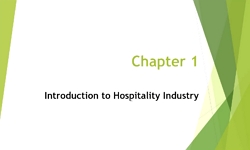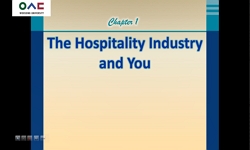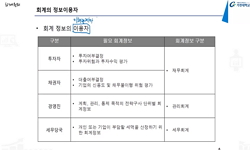Based on two-sided market theory and digital matching firms perspectives, we have addressed Uber’s strategy and its implications. Uber is a digital matching firm that provides a technology platform called Uber Service that links between the driver m...
http://chineseinput.net/에서 pinyin(병음)방식으로 중국어를 변환할 수 있습니다.
변환된 중국어를 복사하여 사용하시면 됩니다.
- 中文 을 입력하시려면 zhongwen을 입력하시고 space를누르시면됩니다.
- 北京 을 입력하시려면 beijing을 입력하시고 space를 누르시면 됩니다.

우버의 전략과 그 시사점: 양면시장 이론과 운송서비스업을 중심으로 = Uber’s Strategy and Its Implications: Focusing on Two-sided Market Theory and Transportation Service Aspects
한글로보기https://www.riss.kr/link?id=A105581672
- 저자
- 발행기관
- 학술지명
- 권호사항
-
발행연도
2018
-
작성언어
-
- 주제어
-
KDC
300
-
등재정보
KCI등재
-
자료형태
학술저널
- 발행기관 URL
-
수록면
31-51(21쪽)
-
KCI 피인용횟수
1
- DOI식별코드
- 제공처
-
0
상세조회 -
0
다운로드
부가정보
다국어 초록 (Multilingual Abstract)
Based on two-sided market theory and digital matching firms perspectives, we have addressed Uber’s strategy and its implications. Uber is a digital matching firm that provides a technology platform called Uber Service that links between the driver market and the client market. The essence of Uber’s strategy is to maximize the cross-network effects of these two markets. Uber has been trying to increase both the driver pool and the availability of transportation services in the driver market in order to boost the demand in the client market, which is in turn supposed to result in sales growth.
The cross-network effects have been possible thanks to the existence information asymmetry for Uber’s favor. The information asymmetry exists because of the nature of transportation service itself and the common features of digital matching firms. The information asymmetry has allowed Uber to influence its drivers as if they were its own employees without triggering any significant bureaucratic costs. The endeavors to influence its drivers (or driver-partners in Uber’s terminology) based on information asymmetry have constituted Uber’s strategies for sales expansion and firm growth.
To increase the supply of drivers Uber has resisted reasonable social demands and violated laws if necessary. For example, the company has lobbied against the tightening of background security checks of its potential drivers in the pretext of offering more opportunities for those under-privileged members of society so that they can earn more money. At the same time, to increase the rate of acceptance of service requests from the client, Uber has limited the supply of information on the requested service to its drivers. All of these efforts are geared toward increasing cross-network effects.
Uber’s efforts to increase the supply of drivers and services to enhance cross-network effects culminate in the strategy of surge pricing. which is made possible thanks to Uber’s price-setting market power and information asymmetry. Uber charges higher prices for certain location during certain time-span reflecting higher demands by the client. Prior studies have shown that surge pricing is credited with less waiting time for the client and higher income for the driver. But some drivers are quite sceptical about surge pricing, questioning the veracity of the demand.
‘Earn extra income during your free time’ has been a major claim by Uber in motivating a potential pool of drivers to sign up for the service. We have tried to derive drivers’ average income to see whether it is the case. Unlike prior studies that have relied on nominal income, we have incorporated conventional expenses in the equation to calculate actual income. For average drivers who worked in San Francisco area in the U.S., the actual income was not as impressive as claimed by the company. We believe that the calculation itself is rather rudimentary, but the outcome has implications for understanding drivers’ behaviors.
In the discussion, we have addressed theoretical and practical implications. We have discussed the implications of information asymmetry and market failure on the employee side on the theory of a firm. We also discussed the broad implications of Uber’s strategies on the transportation services and hospitality industry.
참고문헌 (Reference)
1 이은영, "항공관련 모바일 앱의 이용현황과 이용의도에 관한 연구" 한국항공경영학회 13 (13): 19-31, 2015
2 이동주, "전자상거래의 상품 및 채널 특성과 인지된 위험 - 항공 및 여행 산업에 대한 시사점 -" 한국항공경영학회 14 (14): 99-119, 2016
3 이동주, "모바일 앱 사용자들의 프라이버시 의사결정과 프레이밍 효과-여행 및 항공 산업에 대한 시사점-" 한국항공경영학회 12 (12): 77-93, 2014
4 Townsend, T., "Why Uber doesn't want to Fingerprint Drivers"
5 Henry, T., "Why Lyft and Uber are Fighting to Keep their Data Secret"
6 Jordan, G., "What the Rise of Uber Means for Hotel Parking Lots"
7 Takahashi, I., "What Information do Uber Drivers Know Before they Choose to Pick up a Passenger?"
8 Cohen, P., "Using Big Data to Estimate Consumer Surplus: The Case of Uber" 2016
9 Kokalitcheva, K., "Uber’s New Patent Hints it Could Become our Next Travel Agent"
10 Rosenblat, A., "Uber’s Drivers: Information Asymmetries and Control in Dynamic Work" Data & Society Research Institute 2015
1 이은영, "항공관련 모바일 앱의 이용현황과 이용의도에 관한 연구" 한국항공경영학회 13 (13): 19-31, 2015
2 이동주, "전자상거래의 상품 및 채널 특성과 인지된 위험 - 항공 및 여행 산업에 대한 시사점 -" 한국항공경영학회 14 (14): 99-119, 2016
3 이동주, "모바일 앱 사용자들의 프라이버시 의사결정과 프레이밍 효과-여행 및 항공 산업에 대한 시사점-" 한국항공경영학회 12 (12): 77-93, 2014
4 Townsend, T., "Why Uber doesn't want to Fingerprint Drivers"
5 Henry, T., "Why Lyft and Uber are Fighting to Keep their Data Secret"
6 Jordan, G., "What the Rise of Uber Means for Hotel Parking Lots"
7 Takahashi, I., "What Information do Uber Drivers Know Before they Choose to Pick up a Passenger?"
8 Cohen, P., "Using Big Data to Estimate Consumer Surplus: The Case of Uber" 2016
9 Kokalitcheva, K., "Uber’s New Patent Hints it Could Become our Next Travel Agent"
10 Rosenblat, A., "Uber’s Drivers: Information Asymmetries and Control in Dynamic Work" Data & Society Research Institute 2015
11 Manjoo, F., "Uber’s Business Model Could Change Your Work"
12 Kelly, H., "Uber's Services for the Disabled Lack Actual Cars"
13 Rosenblat, A., "Uber's Phantom Cabs"
14 Carson, B., "Uber is Thinking of Getting into the Travel Business"
15 Rosenfeld, S., "Uber and deregulated hypercapitalism increasingly leave Americans unprotected"
16 Annear, S., "Uber Shares its Data with the City of Boston"
17 Yeung, K., "Uber Proposes $225,000 Fine and Policy Changes to Settle Guide Dog Lawsuit"
18 WhosDrivingYou, "Uber Faces Possibility that Four Largest American Cities will Require Fingerprinting of its Drivers"
19 Levine, D., "Uber Drivers Granted Class Action Status in Lawsuit over Employment"
20 Singer, N., "Uber Data Collection Changes Should be Barred, Privacy Group Urges"
21 Rodriguez, F., "Uber Cuts Passenger Fares, Drivers Cry Foul"
22 Kelly, H., "Uber CEO Explains why He Thinks Fingerprinting Drivers is'unjust'"
23 O’Shea, R., "UK Company to Launch `Uber’ for air with on Demand Flights"
24 Rochet, J.-C., "Two-sided Markets: A Progress Report" 37 (37): 645-667, 2006
25 Penrose, E., "The Theory of the Growth of the Firm" John Wiley and Sons 1959
26 Rogers, B., "The Social Cost of Uber" 82 (82): 85-102, 2015
27 Hall, J., "The Effects of Uber Surge Pricing: A Case Study" A Technical Report
28 Rysman, M., "The Economics of Two-sided Markets" 23 (23): 125-143, 2009
29 Wallsten, S., "The Competitive Effects of the Sharing Economy: How is Uber Changing Taxis?" Technology Policy Institute
30 Uber, "Response of Uber Technologies, Inc. To Assigned Commissioner and Administrative Law Judge’s Ruling"
31 Einav, L., "Peer-to-peer Markets" Stanford University 2016
32 Chen, L., "Peeking Beneath the Hood of Uber" 495-508, 2015
33 Auchard, E., "Now Roughly Equal in Value, Uber and Daimler Trade Gentle Blows"
34 Newcomer, E., "How Uber Rolls"
35 Cassano, J., "How Uber Profits Even while its Drivers aren't Earning Money"
36 Levine, D., "Exclusive: Lyft drivers, if employees, owed millions more–Court documents"
37 Mandell, N., "Everybody loves Uber: The Untold Story of how Uber Operates" BN Publishing House 2016
38 Chen, M., "Dynamic Pricing in a Labor Market: Surge Pricing and Flexible Work on the Uber Platform" University of California 2015
39 Berger, T., "Drivers of Disruption? Estimating the Uber Effect" University of Oxford 2017
40 Cramer, J., "Disruptive Change in the Taxi Business: The Case of Uber" 106 (106): 177-182, 2016
41 Telles, R. Jr., "Digital Matching Firms: A New Definition in the “Sharing Economy” Space"
42 CPUC, "Decision Adopting Rules and Regulations to Protect Public Safety while Allowing New Entrants to the Transportation Industry"
43 Kokalitcheva, K., "California Uber and Lyft Drivers Could Face New Car Rental Limits"
44 Somerville, H., "California Regulators Probing Uber's Leasing Program"
45 Galbraith, L., "Are Uber and Lyft Helping or Hurting the Environment?"
46 Uber, "Application of Uber Technologies, Inc. For Rehearing of Decision 13-09-045"
47 Rayle, L., "App-based, on-demand Ride Servies: Comparing Taxi and Ridesourcing Trips and User Characteristics in San Francisco" University of California Transportation Center, University of California 2014
48 Hall, J., "An Analysis of the Labor Market for Uber’s Driver-partners in the United States" Princeton University 2015
49 Weyl, E. G., "A Price Theory of Multi-sided Platforms" 100 (100): 1642-1672, 2010
동일학술지(권/호) 다른 논문
-
항공기 수리부속의 간헐적 수요에 대한 데이터 마이닝 기반 예측 방법 - 공군 항공통제기(E-737) 수리부속을 중심으로 -
- 한국항공경영학회
- 김태규 ( Taegyu Kim )
- 2018
- KCI등재
-
고객의 관계 성향을 고려한 항공사의 서비스 회복 전략 수립에 관한 연구
- 한국항공경영학회
- 김용철 ( Yong Cheol Kim )
- 2018
- KCI등재
-
항공사 충성도가 모바일 앱 구전의사에 미치는 조절효과: 국내 항공사 마일리지 적립 고객에 대한 비교
- 한국항공경영학회
- 노민정 ( Minjung Roh )
- 2018
- KCI등재
-
- 한국항공경영학회
- 유인호 ( In-ho Yoo )
- 2018
- KCI등재
분석정보
인용정보 인용지수 설명보기
학술지 이력
| 연월일 | 이력구분 | 이력상세 | 등재구분 |
|---|---|---|---|
| 2027 | 평가예정 | 재인증평가 신청대상 (재인증) | |
| 2021-01-01 | 평가 | 등재학술지 유지 (재인증) |  |
| 2018-01-01 | 평가 | 등재학술지 유지 (등재유지) |  |
| 2015-01-01 | 평가 | 등재학술지 유지 (등재유지) |  |
| 2011-01-01 | 평가 | 등재학술지 선정 (등재후보2차) |  |
| 2010-01-01 | 평가 | 등재후보 1차 PASS (등재후보1차) |  |
| 2009-01-01 | 평가 | 등재후보학술지 유지 (등재후보1차) |  |
| 2008-01-01 | 평가 | 등재후보 1차 FAIL (등재후보1차) |  |
| 2006-01-01 | 평가 | 등재후보학술지 선정 (신규평가) |  |
학술지 인용정보
| 기준연도 | WOS-KCI 통합IF(2년) | KCIF(2년) | KCIF(3년) |
|---|---|---|---|
| 2016 | 1.69 | 1.69 | 1.56 |
| KCIF(4년) | KCIF(5년) | 중심성지수(3년) | 즉시성지수 |
| 1.58 | 1.4 | 1.815 | 0.5 |





 KCI
KCI KISS
KISS






